Dutch Revival
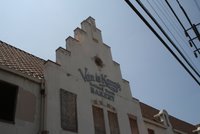
Los Angeles hasn't many examples of Dutch Renaissance Revival architecture (or Mannerist Revival also termed pont-street Dutch or Flanders Revival), the Van De Kamps Holland Dutch Bakery in Atwater Village may be the most noteworthy.
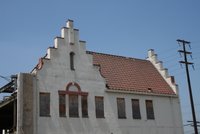
The trapgevel or Dutch gable is a stair step like design at the triangular gable-end of the building. The top of the parapet wall projects above the roof-line and the top of the brick or stone wall is stacked in a step-like pattern as decoration and as a convienent way to finish the brick courses. It was also motivated by practical concerns, access for roofers, chimney sweeps, etc.
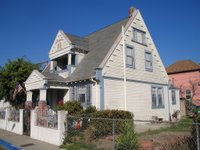
This house might be considered Dutch Revival or Dutch Eclectic, for amongst other features, its steeply pitched parapeted roof and centered gable or pediment with rich entablature. The house resides regrettably and distractingly close to the 10 freeway Hoover off-ramp (on Arapahoe at 22nd). Always I crane my neck to look from the feeder lane, longer than I should.
The revival styles or neo-styles are inconsistent, sometimes because elements from several older styles were combined (so
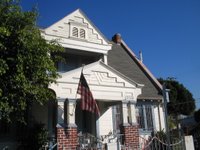 called eclecticism).
called eclecticism).Pairs of square, fluted, Greek columns, a Greek revival element (though never found in Greek and Roman prototypes), add to an intense facade.
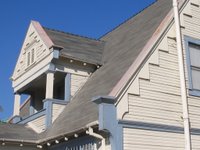 I think this qualifies as a Fractable, a coping on the gable wall of a building, when carried above the roof, and especially when broken into steps, or curves forming an oriental silouhette.
I think this qualifies as a Fractable, a coping on the gable wall of a building, when carried above the roof, and especially when broken into steps, or curves forming an oriental silouhette.One day I'll introduce myself to the occupants: "Hi I'm Adam, and I regularly admire your house from the 10."
I haven't yet, but I will. Why not?
Labels: Architecture

<< Home